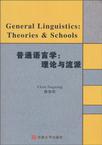普通语言学
出版时间:2010-1 出版社:吉林大学出版社 作者:陈劲松 页数:328
Tag标签:无
前言
Linguistics as an independent subject is relatively young in the tradi-tional sphere of humanities. The subject in the modern sense is believed tohave started from Saussure, the man who for the first time made a systemicinvestigation of the structure and function of language, therefore his work seta borderline between philology and linguistics. Philology is a cover term forthe traditional approach of linguistic study. It is biased towards the histori-cal interpretation of language with which classical documents are under-stood. This is true to scholars in both China and European continent of theclassical times. It is the birth of linguistics that the studY deviates from thephilological approach and is done in the ontological sense, namely, lan-guage is studied in its own right.
内容概要
Linguistics as an independent subject is relatively young in the tradi-tional sphere of humanities. The subject in the modern sense is believed tohave started from Saussure, the man who for the first time made a systemicinvestigation of the structure and function of language, therefore his work seta borderline between philology and linguistics. Philology is a cover term forthe traditional approach of linguistic study. It is biased towards the histori-cal interpretation of language with which classical documents are under-stood. This is true to scholars in both China and European continent of theclassical times. It is the birth of linguistics that the studY deviates from thephilological approach and is done in the ontological sense, namely, lan-guage is studied in its own right.
书籍目录
PrefacePart 1 Language & LinguisticsChapter 1 What is Language?1 Definitions2 Distinctive Features2.1 Hierarchy2.2 Arbitrariness2.3 Duality2.4 Productivity2.5 Displacement2.6 Cultural Transmission3 Functions of Language3.1 Conceptualized Function3.2 CommunicativeFunction3.3 Meta-lingualFunctionChapter2 HistoryofLanguage1O rigin&Evolution1.1 Origin1.2 Evolution2LanguageChange2.1 ChangeofSound2.2 ChangeofStructure2.3 ChangeofMeaning2.4 Change of LexiconChapter 3 World Languages1 Genealogical Classification1.1 Family Relationships1.2 Language Families 2 Typological Classification2.1 Morphological Typology2.2 Syntactic TypologyChapter 4 Linguistics: Scientific Study of Language1 Saussure: Inception of Modem Linguistics1.1 Langue & Parole1.2 Signifier & Siguified1.3 Syntagmatic Relation & Paradigmatic Relation2 What is Linguistics?Part 2 Intra - linguisticsChapter 1 Phonetics & Phonology1 Phonetics1.1 Phonetic Alphabet1.2 Consonants & Vowels1.3 Phonetic Features1.4 Syllables2 Phonology2.1 Phonological Features2.2 Phonological Processes2.3 Phonological RulesChapter 2 Morphology & Syntax1 Morphology1.1 Word & Lexeme1.2 Morpheme: Morph & Allomorph1.3 Morpheme: Free & Bound1.4 Phonetic Representation of Morpheme1.5 Lexical Morphology & Inflectional Morphology2 Syntax2.1 Syntagmatic Relationship & Paradigmatic Relationship2.2 Grammatical Categories2.3 GrammaticalityChapter 3 Semantics & Pragmatics1 Semantics1.1 Semantics from Philosophical Perspective1.2 Semantics from Logical Perspective1.3 Semantics from Linguistic Perspective2 Pragmatics2.1 Deixis2.2 Pragmatic Implicature2.3 Cooperative Principle & Politeness Principle2.4 Presupposition2.5 Speech ActPart 3 Extra - linguisticsChapter 1 Psycholinguistics1 Biological Foundations of Language1.1 Brain Anatomy1.2 Brain & Language2. Psychological Processes of Language2.1 Language Acquisition2.2 Language Production2.3 Language Comprehension2.4 Language DissolutionChapter 2 Sociolinguistics1 Cultural Foundations of Language1.1 Kinship Terms1.2 Language & Cultural Identity1.3 Linguistic Relativity2 Language as a Social Parameter2.1 Language as a Code2.2 Social Varieties of language2.3 Lingua Franca2.4 Language & Race2.5 Language & SexChapter 3 Applied Linguistics1 Language Teaching1.1 Linguistic Assumptions in Language Teaching1.2 Methods in Language Teaching1.3 Syllabus Design1.4 Testing2 Language & Other Subjects2.1 Language & Philosophy2.2 Language & Literature2.3 Language & Computer SciencePart 4 Contemporary Linguistic SchoolsChapter 1 Transformational- generative Linguistics1 Methodology2 Main Hypotheses about Language2.1 The Relations between Language & Faculty2.2 Language Acquisition2.3 Linguistic Universals3 TG Grammar3.1 The Original Theory3.2 The Standard Theory3.3 The Extended Standard Theory3.4 The GB Theory & MP Theory Chapter 2 Systemic - functional Linguistics 1 Historical Retrospect1.1 Prague School1.2 London School 2 Systemic Grammar & Functional Grammar2.1 Systemic Grammar2.2 Functional Grammar Chapter 3 Cognitive Linguistics 1 Experiential View1.1 Lexical Category & Prototype1.2 Metaphor & Metonymy 2 Prominence View2.1 Gestalt Theory2.2 Figure - ground Division2.3 Schematic Representation 3 Attentional View3.1 The Organization of Conceptual Structures3.2 Construal Operations Bibliography
章节摘录
Naming theory was also popular in secular world, namely, seen fromconjectures of ancient Greeks. Like its splendid philosophy and science,Greek scholars of classical times were also interested in the origin oflanguage. Since ideas in those years were much centred upon elicitations,understanding of language was of speculative nature too. In Cratylus of Plato,he initiated the theory of onomatopoeia, namely, language emerged asimitation of sounds. The theory does make sense as to the origin, to someextent, but it is not all-embracing if explanatory adequacy is considered. Some of the interesting hypotheses arose which are also of speculativenature. One of the German scholars, Mueller gave the bow-wow theory,prescribing that language is the product resulting from the imitation ofsounds in nature, say the babbling of brook, the murmur of the wind, and thelike. Ding-dong theory is expected to establish the relationship betweensound and meaning. In this regard, word for an object represents any noiselinked to it. Pooh-pooh theory means that language consists of exclamationsas a result of human emotions or feelings like pain, gaiety, fear, and the like.Ye-he-ho theory maintains that language is also a product of exclamatoryutterances but of those when humans are in intense physical efforts, say thoseheard among a group of workers carrying logs.
图书封面
图书标签Tags
无
评论、评分、阅读与下载
用户评论 (总计0条)
推荐图书
- 当代逸品
- 电工技术基础与技能
- 超简易电子琴中外名曲演奏(1VCD)
- 华人首富李嘉诚传(DVD)
- 杜拜玩全指南(1VCD)
- 少林真功夫(1VCD)
- 兵临城下(DVD9)
- 生死第六感(DVD9)
- 空手道日本武术精粹:晋级篇(1VCD)
- 魅惑绚彩肚皮舞惊艳S型魔鬼身材(1VCD)
- 现代纤身印度舞(1VCD)
- 围棋六日通(1VCD)
- Kitty大众健身操(1VCD)
- 神虎术擒拿护身360绝艺3(1VCD)
- 针灸实用入门(VCD)
- 封闭式基金投资必学(1VCD)
- 基金定期定额投资诀窍(1VCD)
- 2007NBA全明星赛(1VCD)
- 史蒂夫•纳什(1VCD)
- 中国宝宝按摩与抚触操(VCD)
- 轻松选牛股(1VCD)
- 流行韩国街舞之舞行天下(1VCD)
- 彩色铅笔画技法(1VCD)
- 大众健身舞3:南泥湾(1VCD)
- 铣工职业技能(上)(1VCD)
相关图书
- 人体实物解剖图谱
- 樊梨花烽火奇遇结良缘(2DVD 简装版)
- 巴黎歌舞秀(2VCD)
- 绝代芳华(4CD) [套装]
- 永恒的爱/珍藏绝版集(4CD) [套装]
- 戊子风雪同仁堂(12DVD)
- 2011中医助理医师资格考试历年真题纵览与考点评析
- 铃木亚美:完美甜心(CD)
- EXILE:纯真(CD)
- 倖田来未:无时无刻(CD)
- 评弹:俞调名家系列之5(CD)
- 库贝里克指挥勃拉姆斯交响曲(CD)
- 评弹:俞调名家系列之3(CD)
- 评弹:俞调名家系列之4(CD)
- 塔曼伊演奏巴赫小提琴奏鸣曲和帕蒂塔(2CD) [套装]
- 巴克豪斯演奏肖邦钢琴作品(CD)
- 越剧:尹小芳名曲精选(CD)
- 韩红 胡彦斌:卡拉最高峰(4VCD) [套装]
- 十亿个掌声邓丽君15周年演唱会(2VCD) [套装]
- 十亿个掌声邓丽君十五周年演唱会(DVD)
- 终极一家电视原声带(CD+DVD) [套装]
- 肾内科主任医师查房
- 聪明宝宝的开始故事胎教篇:水浒传(6CD豪华装) [套装]
- 小儿扁桃体炎与心脏病
- 温馨的家居
